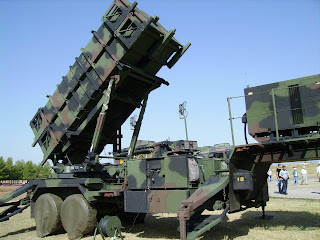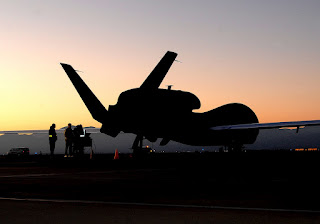 |
| Chao Li-yun, third from left, leads the press conference |
How time flies! It’s been a year already since some people within the Ma Ying-jeou (馬英九) administration threatened to have me investigates, kicked out of the country, and PNG’d over an article I’d published the previous day in the Wall Street Journal on Chinese penetration of Taiwan’s national security apparatus.
I have already touched on certain aspects of my tale in a previous post and do not intend to revisit them here. Suffice it to say that 24 hours after my piece appeared in the WSJ, a spokesperson at the Ministry of National Defense (MND) was informing me that I had been “de-invited” from the annual banquet with reporters, and then-Chinese Nationalist Party (KMT) caucus whip Chao Li-yun (趙麗雲) was heading a press conference in which I was threatened with expulsion if I didn’t apologize and reveal my sources.
It’s true that I hadn’t pulled any punches in my piece, naming names (including those of senior officers in the armed forces) and even raising the possibility that the US might be reluctant to sell advanced military technology to Taiwan if the latter didn’t address the Chinese espionage problem adequately. While Chao and some others in the pan-blue camp implied that I had been “directed” by the very green Liberty Times (the Taipei Times’ sister newspaper), none of this was true. In fact, neither the Taipei Times (my employer) or the Liberty Times knew of my article until Chao threatened to have me expelled, a story that made the front pages and was the object of several reports on TV and on talk shows.
The reason I had turned to the WSJ was simple. After publishing a series of articles and op-eds on the subject in the Taipei Times and getting little, if any, response, I felt I had to turn to a publication that had more gravitas, and one which the Taiwanese government could not ignore. I knew, for one, that Taiwan’s office in Hong Kong had immediately reacted to the first op-ed I’d published in the Journal the previous year. Part of my frustration also stemmed from the Liberty Times’ failure to follow through on my series of articles on Chinese espionage. This time it worked: one day after my piece appeared in the Journal, the Liberty Times had a front-page news article about it. And the rest is history. The Ma government could no longer ignore it and had to come out and explain the situation. Whether its initial reaction — threatening to expel a foreign journalist for the first time in about 20 years — was the right one is not for me to decide, but all I can say is that I had finally forced the accounting that, after months of investigating the subject and interviewing Taiwanese and Americans involved in arms sales, was long overdue.
Another false assumption on the pan-blue side was the idea that I had written the article to hurt Ma’s image at a time when Taipei was awaiting Washington’s answer on the long-sought F-16s. Chao and others could not have been more wrong on that issue. Had it been Chen Shui-bian (陳水扁) or Tsai Ing-wen (蔡英文) or anyone else in office, and had the same situation prevailed, I would have written the exact same piece. Rather than write that Ma should “clean house,” I’d have counseled that Chen or Tsai should do so. Having spent a fair amount of time with the armed forces over the years, I wrote what I wrote not out of enmity towards the military, but for very opposite reasons. I have seen the commitment to defending Taiwan’s way of life, and I have made friends in the Taiwanese military, people for whom I have great respect (the constant ridicule of the armed forces by the public and the media is not only wrong, but does great harm to morale in the ranks). Above all, what I was seeking, hearing the worrying signals that I was hearing from Washington, was to sound a wake-up call so that (a) Taipei would reaffirm its commitment to countering Chinese espionage and (b) hearing the right signals, Washington would continue to sell advanced weaponry to its Asian ally.
In the end I was not expelled and I was eventually re-invited to the MND lunch, where, rather to my chagrin, I became the center of attention the moment I walked in the banquet hall. I honestly did not know what to expect. Would the admirals and generals express resentment? Ignore me? Most, as it turns out, were friendly and some even expressed encouragement, as did many of the reporters who attended the event. Deputy Minister of National Defense Andrew Yang (楊念祖), who I am told played no small role in having me put back on the invitation list, went out of his way to chat with me and exchange business cards as he did the round of toasts, exchanges that were captured on film and video and that resulted in a rather unflattering picture by CNA of me laughing and looking awkward. “You’re having an interesting week, aren’t you?” Yang told me as we shook hands. “Let’s make sure we keep in touch.” By that point, I knew that I was probably in the safe zone again. The crisis had boiled over, and I suspect that some rather senior people in the Ma administration or at MND let Chao know that her overreaction, the press conference, the threats and so on, risked damaging Ma’s image more than anything, even more so had the authorities acted on her threat.
So what have I learned from all this? How did this affect me as a journalist? For one, it gave me hope in the resiliency of Taiwan’s democratic system. Had I been in, say, China, I’d have been long gone, and possibly taking a few bruises with me. After an initial knee-jerk reaction, things took their course as they should in any democratic society and the situation boiled over. James Soong (宋楚瑜) announced his intention to run in the presidential election. The news cycle moved on. I’d be lying if I said I didn’t lie low and avoided writing about controversial subjects for a while (though soon afterwards I was leading the charge in Canada over a MP’s flirtations with the Xinhua News Agency bureau chief). But once I knew I’d gone over that bump and survived, and once MND resumed inviting me to exercises and events, I went back to what journalists are supposed to do — and that means abiding by the No. 1 rule that anybody, friend and foe, is fair game. Journalists are not in the business of being nice to people. In fact, as one reporter in Taiwan and a close friend told me recently, the moment we don’t make some people angry with our articles, it means we’re not doing our jobs and it’s time to look for a different line of work. How true.
What the incident also did was boost my career and reputation (generating envy among some reporters), which in turn helped me, I think, mature as a reporter. I became more aware of the impact our work can have on policy. And with that comes responsibility. Sometimes — rarely, but sometimes — what we write has consequences for other people. It can also lead to alienation when egos are hurt because of what we report or express in editorials. And on some occasions, especially when one writes, as I do, about sensitive issues like national defense and intelligence, it gets people into trouble. My writing and radio interviews about the Bob Dechert scandal in Canada, for example, could have cost him his job. It didn’t, but I think I nevertheless managed to draw attention to the threat of Chinese espionage in Canada. On another occasion, what I wrote resulted in a series of people, including friends, facing tough questioning and the polygraph.
I have since been accused of being “drunk with fame” and of ignoring the consequences of my work. I don’t think that’s the case, and every time I write something on a sensitive subject, I weigh the pros and cons of publishing. Some stories I have killed, knowing the repercussions would be too damaging. In other situations, I’ve avoided mentioning certain things, or made vague, rather than direct, references to certain aspects of what I was looking at. Reporters therefore walk a fine line, and even though our articles must go through a series of approvals and edits before going to print, in the end the ultimate arbitrator is the journalist himself. As long as we know we are honest in what we do, and that what we write is for the greater good and in the interest of the public, I don’t think one should self-censor or stop doing his job. Life is filled with consequences. I have written articles that ruffle feathers, even those of people I consider friends. But a reporter, even as a friend, must tell truth to power and call it like it is. That becomes even more important when we see good-intentioned friends go down a road that can only lead to disaster or hurt their cause. It’s not easy, and sometimes friendships are ended as a result of what we write. But that’s the calling, and I think this is the only way to go. Anything less than that is fraudulent.
One last, and probably related, consequence of last year’s incident is that it exacerbated my need not to feel ignored. Reporters’ worst fear is to not be read, or for their work to be glanced at and quickly forgotten. This trait is probably even more pronounced in lone children, of which I am a specimen. There’s no hiding the fact that the crisis, while giving me a good scare, was also exhilarating and made me feel more alive than I had in years. Although I liked to joke that I’d rather write the news than be the news, part of me thoroughly enjoyed the attention. Getting that high, to use a drug analogy, makes it difficult — frustrating, indeed — to be satisfied with the more moderate rushes, or the ordinariness that characterizes most days in a reporter’s life. As I told someone recently, it’s very hard to go from being the center of attention in a high-stakes, billion-dollar-arm-sale situation to editing an article about rising prices of dried noodles in 2012. To me, this has been very frustrating, and I constantly feel like I am wasting my time, or not living to my full potential, when I go for an extended period of time without getting that hit again. The danger in this, in constantly seeking that rush, is that it can lead to recklessness, and there are times when I do wonder if I’m not going too far with some articles to get there again.
We don’t do it for the money, for it isn’t there. And the field is struggling. We do it because we can’t imagine ourselves doing anything else. And we hope for those highs every once in a while. Would I willingly go through it all again, the threats, anxiety, alienation? Yes. For the thrills, and for the knowledge that we did something right.




















